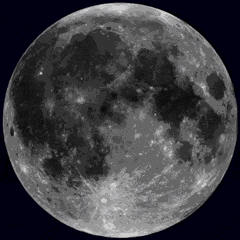<p >Russian Security Council Secretary Sergei Shoigu has confirmed that the Korean People’s Army will dispatch 1000 mine clearance experts and 5000 military engineers to support de-mining and reconstruction efforts in the Russian Kursk region, following the routing of the last Ukrainian forces there in April.&nbsp; The official described the new deployment as an extension of North Korea’s <a href="https://militarywatchmagazine.com/article/russia-details-nkorea-role-repelling-kursk" target="_blank">military support</a> under its strategic partnership treaty with Russia, which obliged it to provide backing in the event of an attack on Russian territory. Mine specialists would “sweep the Russian territory,” while 5,000 military engineers would help “rebuild infrastructure destroyed by the occupants,” he stated. Shoigu has made increasingly frequent visits to North Korea, as the country’s importance to Russian security interests has <a href="https://militarywatchmagazine.com/article/russia-redeploys-50000-kharkov-kursk" target="_blank">continued to grow</a>. </p><p >Commenting on the frequency of his visits, Shoigu stated that there were necessary to oversee “the intensive pace of the implementation” of the strategic partnership agreement. Maintaining momentum in strengthening defence ties between Moscow and Pyongyang “requires constant attention and course-correction on all levels,” he added. Russia and North Korea’s defence ties were limited before the outbreak of full scale Russian-Ukrainian hostilities in 2022, largely due to Moscow’s continued efforts to strengthen ties with the United States and countries in the European Union, which imposed considerable pressure to limit ties with the socialist East Asians state.&nbsp;</p><p ><img src="https://militarywatchmagazine.com/m/articles/2025/06/20/article_6854bd8456a5e0_74604239.jpg" title="North Korean Personnel in the Russian Kursk Region"></p><p >North Korea has emerged as by far the <a href="https://militarywatchmagazine.com/article/russian-army-units-training-nkorean-140mm-mortars" >greatest foreign arms supplier </a>to the Russian Armed Forces, with its equipment prized not only for its advanced capabilities, which in many cases <a href="https://militarywatchmagazine.com/article/nkorean-bulsae4-antitank-takes-out-ukraine-artillery-kursk" target="_blank">surpass those</a> of their Russian-produced counterparts, but also for the sheer quantities available. The Russian Army was by the end of 2024 already estimated to have&nbsp;received up to 9 million rounds&nbsp;of 122mm and 152mm artillery from the country, with newer images having confirmed the adoption of 60mm and 140mm mortars for use in frontline Russian Army units. North Korean ballistic missile systems have also played a major role in the country’s military operations since January 2024, with the KN-23B tactical system boasting a much <a href="https://militarywatchmagazine.com/article/move-aside-iskander-kn23b-russia-top" target="_blank">longer range and higher warhead weight</a> than any system produced in Russia.&nbsp;Commander of Ukraine’s Defence Intelligence Directorate Lieutenant General Kyrylo Budanov earlier in June <a href="https://militarywatchmagazine.com/article/nkorean-superheavy-artillery-long-range-high-precision-ukrainian" >singled out </a>the performance of North Korean 170mm self-propelled howitzers in combat, noting: “Unfortunately, this gun is demonstrating itself quite well in battle. It’s firing from quite a long range, and it’s quite good in terms of accuracy.”</p><p ><img src="https://militarywatchmagazine.com/m/articles/2025/06/20/article_6854bfd95896d7_60698909.jpg" title="North Korean 170mm Self-Propelled Howitzers"></p><p > </p><p >Elaborating on the role of 170mm guns from North Korea,&nbsp;Budanov elaborated:&nbsp;“We have data that the Russian Federation was provided 120 pieces. But I think that supply will continue because these guns are demonstrating themselves quite well. This is unfortunate for us because this is artillery for long-range firing.” The guns have a significantly longer reach than those previously in Russian service, or than the <a href="https://militarywatchmagazine.com/article/germany-italy-french-weapons-unsatisfactory-ukraine" target="_blank" >Western 155mm guns</a> provided to Ukraine by its strategic partners in NATO. Many Russian artillery units having come to rely almost entirely on North Korean supplied ammunition, with at least six Russian artillery units currently sourcing between 50 and 100 percent of their munitions from the East Asian country. These arms supplies have been supplemented by <a href="https://militarywatchmagazine.com/article/russia-details-nkorea-role-repelling-kursk" target="_blank" >North Korean personnel deployments</a> to support Russian efforts to repel Ukraine’s incursion into Kursk, which included not only Ukrainian personnel, but also contractor personnel from a <a href="https://militarywatchmagazine.com/article/contractors-kursk-polish-french-details" target="_blank" >number of NATO members</a> including Poland and the United States.&nbsp;</p>
